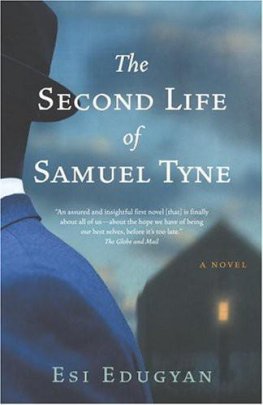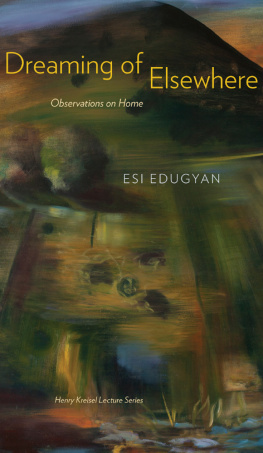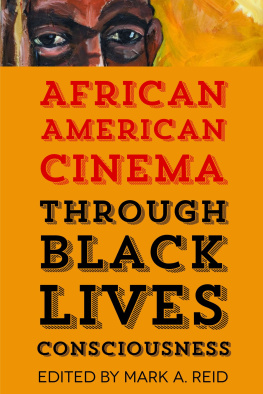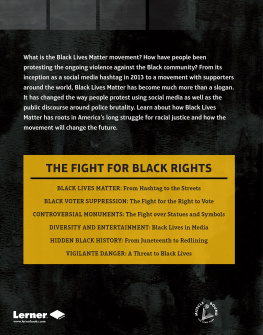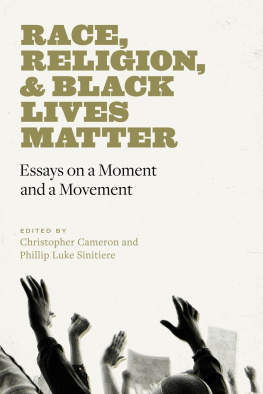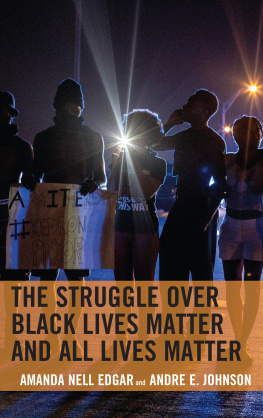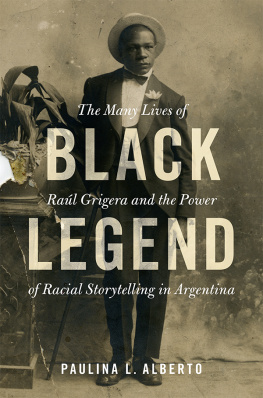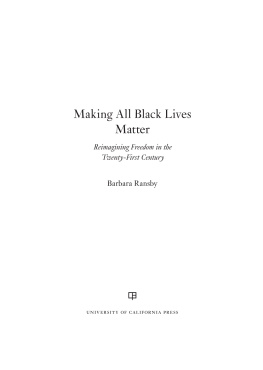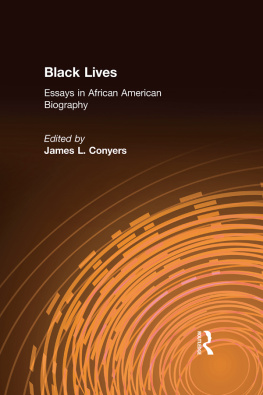Copyright 2021 Ides of March Creative, LLC, and the Canadian Broadcasting Corporation.
Published in Canada in 2021 and the USA in 2021 by House of Anansi Press Inc.
www.houseofanansi.com
All rights reserved. No part of this publication may be reproduced or transmitted in any form or by any means, electronic or mechanical, including photocopying, recording, or any information storage and retrieval system, without permission in writing from the publisher.
House of Anansi Press is a Global Certified Accessible (GCA by Benetech) publisher. The ebook version of this book meets stringent accessibility standards and is available to students and readers with print disabilities.
25 24 23 22 21 2 3 4 5 6
Library and Archives Canada Cataloguing in Publication
Title: Out of the sun : on race and storytelling / Esi Edugyan.
Names: Edugyan, Esi, author.
Series: CBC Massey lectures.
Description: Series statement: The CBC Massey lectures
Identifiers: Canadiana (print) 20210222077 | Canadiana (ebook) 20210222093 | ISBN 9781487010508 (hardcover) | ISBN 9781487009885 (EPUB)
Subjects: LCSH: Art and race. | LCSH: African diaspora in art. | LCSH: Race awareness in art. | LCSH: Minorities in art. | LCSH: ArtsHistory. | LCSH: Arts and society. | LCSH: African diasporaHistory. | LCGFT: Essays.
Classification: LCC NX650.R34 E38 2021 | DDC 704.03/96dc23
Cover design: Alysia Shewchuk
Text design: Ingrid Paulson
Typesetting: Laura Brady
House of Anansi Press respectfully acknowledges that the land on which we operate is the Traditional Territory of many Nations, including the Anishinabeg, the Wendat, and the Haudenosaunee. It is also the Treaty Lands of the Mississaugas of the Credit.
We acknowledge for their financial support of our publishing program the Canada Council for the Arts, the Ontario Arts Council, and the Government of Canada.
For Kofi and Abena
Introduction
In The Art of War, Sun Tzu explains how an army should use the sun to its advantage. Camp in high places, facing the sun, he advises. Mountains are preferable to valleys, illuminated places to dark ones. When confronted with a hill or a bank, an army should occupy the sunny side.
He was interested, in part, in exploiting human weakness. Flooded by light, the eye struggles to see clearly. Edges are shadowed, and it becomes difficult to know what, if anything, is there. A vast force appears smaller, shrunken by our muddled perceptions. The people on the margins remain unseen. At the last moment, they come pouring out of the sun like phantoms breaking through into the world of men.
I have always liked this image, of the hidden rushing suddenly into view. The idea of who is seen, and who remains unseen, has been at issue in so many recent conversations about race, gender, sexuality. A world of shadows edges our written histories, and to attempt to see it is not just to recover one human story, but to piece together the larger picture hidden from us. These lectures look directly at those figures and stories lost to us, and at what it means for us collectively to have been unable to see them.
We speak so much about the universality of being human, about the similar things that connect us. I dont want to lose sight of that. But in some ways, such talk camouflages the problem of difference not difference itself, but our diminishment of it. It can be just as illuminating, I think, to look at the opposite. This year of lockdowns and sickness has starkly revealed the gulfs between our lives. Experiences divide us, uneven access to necessities and comforts, different childhoods, traumas, faiths. If we wish to understand each other, we must first acknowledge the vastly unequal places from which we each speak, the ways some have been denied voices when others are so easily heard.
In some respects, history functions the way language does. Our words have agreed-upon meanings; this is how we understand each other. Language is a shared tool based on a shared idea of reality, and its points of reference must generally be the same for it to work. But language can be changed by revoking ones consent by refusing, for example, to agree on the meaning of a word, or by disavowing it, or by changing its evocations entirely, until it becomes something else, something new. History also works on the principle of an established reality. And just as language can be changed, for better or for worse, by revoking ones consent, so can our collective stories. What happens when our once-settled narratives become unsettled? What happens when they begin to shift the boundaries of what we have long believed?
These pieces were begun as the first Covid-19 lockdowns were put into place and finished just as efforts are underway to vaccinate against the virus. What got me through this year, with its street protests and its anguish, its illness and joys and bewilderment, was the quiet dredging up of these lives from other times, and the attempt to discover how, if at all, they have shaped our own.
Part memoir, part travelogue, part history, these pieces are meditations on identity and belonging, and on the consoling refuge that stories can be. I am not a historian, only a storyteller with an interest in overlooked narratives, and Ive always been curious as to why we sideline some stories and mythologize others. What social and political instincts inform our remembering; how much are our omissions the result of apathy, of indifference? I wanted to know the living, breathing people who have remained beyond our sight, occupying the shadows.
Chapter One
europe and the art of seeing
1
In the spring of 2018, I had the unusual experience of sitting for my oil portrait. This does not, I think, mean what it used to. The invention of photography has made it easier to be a painters subject; it is now possible to avoid the long hours once required of sitters. It has freed them from needing to assume the same pose over and over, allowed them faster escape if the painter is bad-tempered or boring, shallow or arrogant. Such mercies work both ways: I am sure the stories of annoying sitters are legion. It is a fascinating relationship, in any case, because it suggests an intense intimacy and the abrupt severance of it. The painter will finish the painting; the sitter will leave and not return; the two might never speak again. That interlude together, however brief, represents not just a physical moment in time, but the filtering of an identity through incremental judgements that may or may not render the final image truthful.
The painter John Hartman was a warm and soft-spoken man with an unassuming voice. When he arrived at my home, on the coast of Vancouver Island, his calm eyes swept over the sun-filled room as he quickly identified the Barker Fairley portrait above my dining room table. Of course, I thought, of course he would make a swift artistic diagnosis of my familys modest collection. He set to work right away, having me take up different poses throughout the open rooms, his conversation pleasant and economical, his gaze sharp and assessing, but somehow politely so. His project was a series of oil portraits of Canadian writers within settings meaningful to them, and he had spent the morning flying a drone over my house and its surroundings, over the partitioned waters of the lagoon and the ocean, across the rocky vistas of the old fortress of Fort Rodd Hill, with its red-roofed lighthouse, over the grey mass of Hatley Castle and the migratory-bird sanctuary, its riot of fighting swans and geese. I have lived in this place for over ten years, yet seeing the pictures taken by his drone, Im surprised how pure and convenient it all looks, how free of the anxieties and judgements I sometimes lay upon it. This recalibration of perception will also be applied to my face. This has no doubt always been the case with painters subjects; who you are is not who others see.


